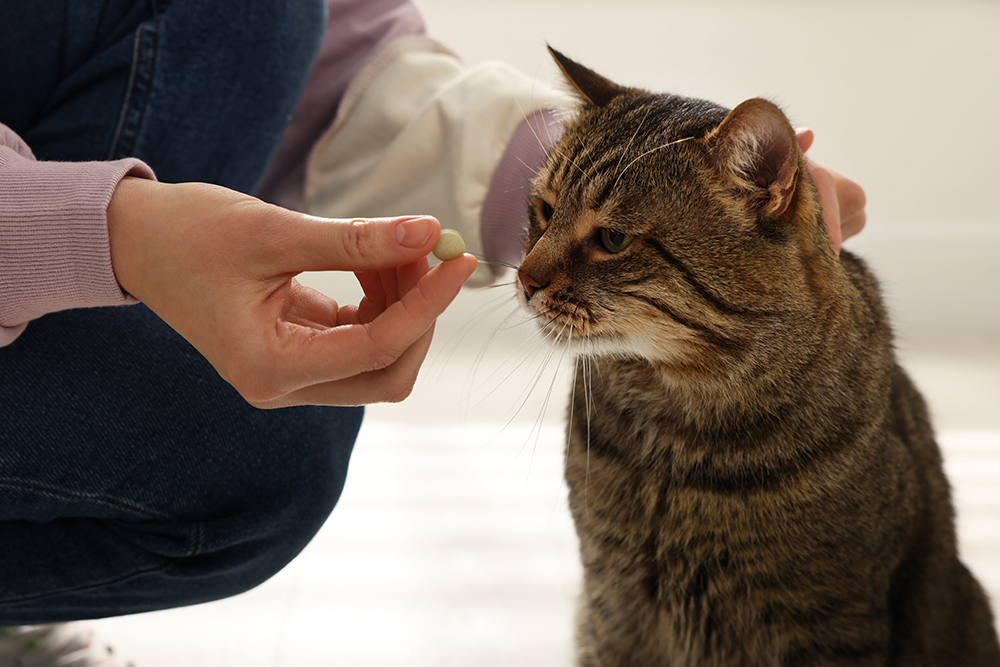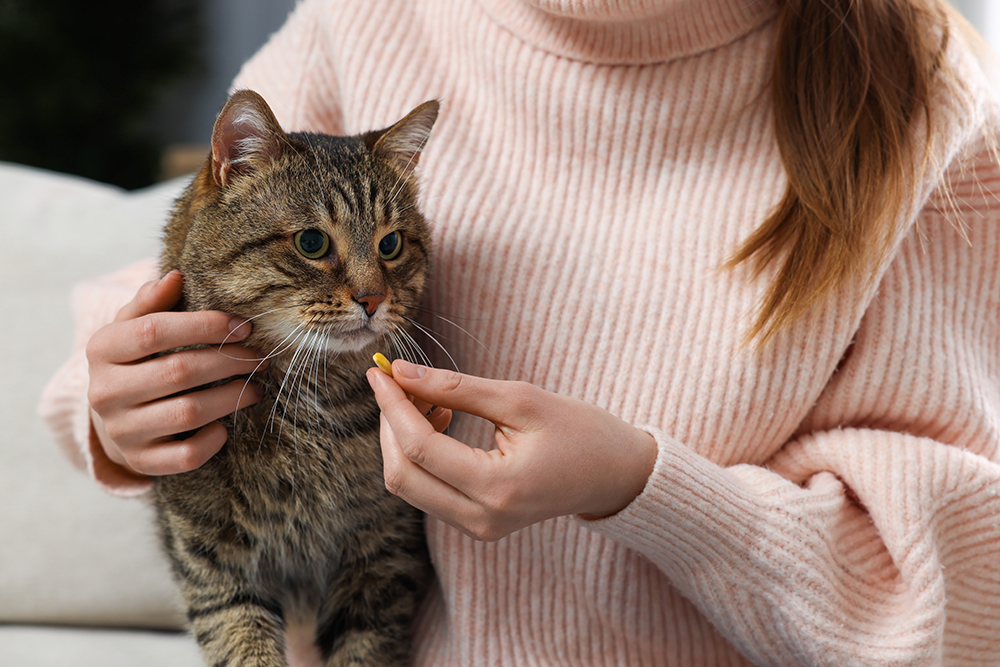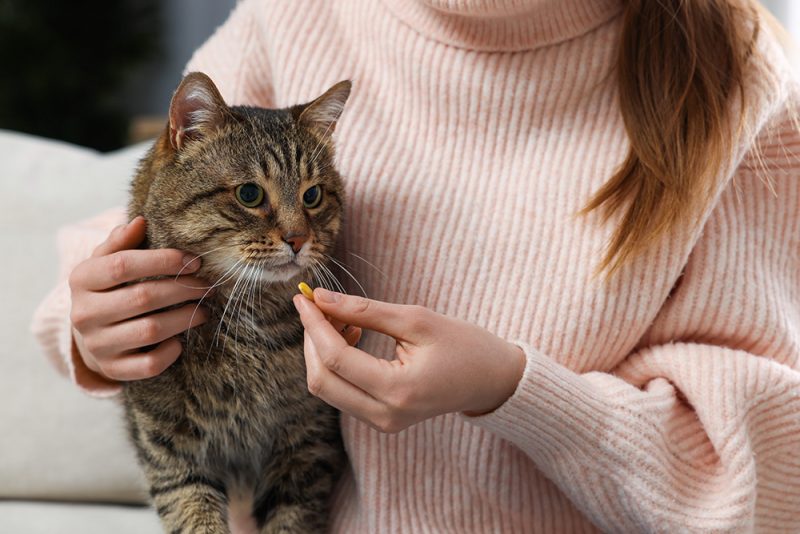Click to Skip Ahead
If you’ve ever given a pill to your cat, you know how challenging it can be. There are several reasons you may want to cut a pill for a cat. It may be easier to get your cat to take large pills in smaller portions, or your vet may have given you a higher dosage with instructions to split them.
However, you can’t just cut any pill safely. Not all pills can be split, and doing so can dramatically affect the dosage or how the medication works. Find out which cat pills are safe to cut, which ones you should leave as is, and how to ensure you’re administering your cat’s medication safely and accurately.
Can Cat Pills Be Cut Safely?
Some pills are safe to split. Tablets with a score or indented line down the center are generally safe to split along that line. This indicates that the dosage will be correct and that the way the medication works will not be altered by cutting it.
If you don’t see a scoreline, ask your vet. Some tablets that aren’t scored are still safe to cut in half, but you should always follow your vet’s recommendations.
Some medications should generally not be cut, however. For example, modified-release dosage forms, such as extended-release tablets, can be altered by splitting them. The medication will then come out too quickly or too early, which can make it less effective or increase the risk of adverse effects.
In addition, you should generally not cut or open a capsule. Like extended-release tablets, capsules are designed to release medications at a specific time or in a location in the body. That said, there are capsules with instructions to open and sprinkle them on your cat’s food, but it’s best to check with your vet before doing so.

How to Cut a Pill in Half Without a Pill Cutter
Pill cutters are the best way to split pills safely and accurately. These devices are simple and inexpensive. You can find them in most pharmacies. All you have to do is put the pill into the cutter with the score line along the cutting edge to split it.
If you don’t have a pill cutter, you may be able to break a scored pill along the score line. This can be challenging with smaller pills, however.
Some people use knives or nail clippers to split pills, but these methods can be dangerous. It’s easy to cut yourself while trying to split a pill, and even scored tablets may not split evenly along the score line.
However you choose to split pills, make sure to wear gloves. Some medications are safe to handle without them, but it’s best to err on the side of caution to protect yourself.
How to Cut a Pill Into a Quarter Without a Pill Cutter
Even with a scored medication, cutting a pill into smaller than two halves isn’t recommended, whether you’re using a pill cutter or another method. Pills will usually crumble, making it difficult to get a clean line and full, accurate ¼ dose. At best, you’re guessing at the dosage.
Not all pills are perfect circles, either. Pills may be oblong, hexagonal, or other shapes, making it more difficult to get a ¼ cut that’s actually a ¼ of the dosage.

How to Cut a Pill Into Three-Quarters Without a Pill Cutter
Like cutting into ¼, cutting a pill into ¾ with or without a pill cutter isn’t recommended. It’s essentially a reverse of the ¼ cut, so it’s difficult to estimate an accurate dosage, and pills may crumble—especially with oddly shaped pills.
Should I Cut My Cat’s Pills?
Before veterinary medicine advanced as much as it has in recent years, tablets needed to be split to get the right dosage. Now, most medications are available in a range of sizes or special formulations, including options for cats that are difficult to pill, so there’s often no longer a need to split medications.
On the rare occasion that you may need to cut your cat’s pills, only do so with explicit instructions from your vet. They can tell you if a pill is safe to cut and how to ensure you’re getting the right dosage.
If you’re tempted to split pills to make pilling your cat easier, speak to your vet about your options. Some medications can be compounded into a liquid formula with an enticing flavor or a gel that can be rubbed onto the ear to make the experience more pleasant for your cat (and you). Not all medications can legally or biochemically be made in such preparations, however.

Conclusion
Cutting pills for cats used to be more common, but there are now more dosage options and formulations that no longer require this practice. If you do feel the need to split your cat’s pills, only do so with a pill cutter under the advice of your veterinarian.
Featured Image Credit: New Africa, Shutterstock















